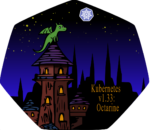
The CNCF Technical Oversight Committee (TOC) has voted to accept Strimzi as a CNCF incubating project.
Strimzi simplifies the deployment and management of Apache Kafka clusters on Kubernetes, leveraging the operator pattern to ease installation, upgrades, and security tasks. Apache Kafka, known for its scalability and fault tolerance, is widely used for building event-driven architectures and real-time data pipelines.
Developed by Red Hat in 2017 and joining the CNCF Sandbox in August 2019, Strimzi has grown significantly, with over 1600 contributors from more than 180 organizations. It is used in production by several companies, including Axual, Atruvia, Decathlon, LittleHorse, and SBB.
“Strimzi does an excellent job of making Kafka easy to install and manage on Kubernetes. The project has matured to the point where it has gained the trust of numerous production users. The community around it continues to grow and the processes are set up to handle that. I’m happy to see Strimzi move to the Incubation level,” said Matt Farina, Strimzi TOC Sponsor.
Strimzi introduces several key components to streamline the operation and management of Apache Kafka clusters on Kubernetes, with the Cluster Operator playing a pivotal role. This component is responsible for deploying the Kafka cluster, initiating brokers with the specified configurations, and managing version upgrades by systematically rolling out updates to brokers. It extends its functionality to support other components like Kafka Connect and Mirror Maker 2, showcasing its versatility in managing diverse aspects of the Kafka ecosystem.
The Topic Operator is another critical component, designed to simplify topic management within the Kafka cluster. It empowers users to create, update, and delete topics effortlessly through the use of a KafkaTopic custom resource. This operator-centric approach allows for more intuitive and direct management of Kafka topics, enhancing the user experience and streamlining administrative tasks.
The User Operator focuses on the management of cluster users and their access control lists (ACLs). Through the KafkaUser custom resource, administrators can define and modify user permissions on topics, providing a seamless method to manage access controls and ensuring the secure and efficient operation of the Kafka cluster.
In addition to these core components, Strimzi incorporates support for modern protocols and configurations, including OAuth 2.0 for authentication. It also offers an HTTP-based endpoint for interacting with the Kafka cluster, which can be configured via ConfigMap or environment variables. These additional features further extend Strimzi’s capabilities, making it a comprehensive solution for deploying and managing Kafka clusters on Kubernetes with enhanced security, scalability, and ease of use.








